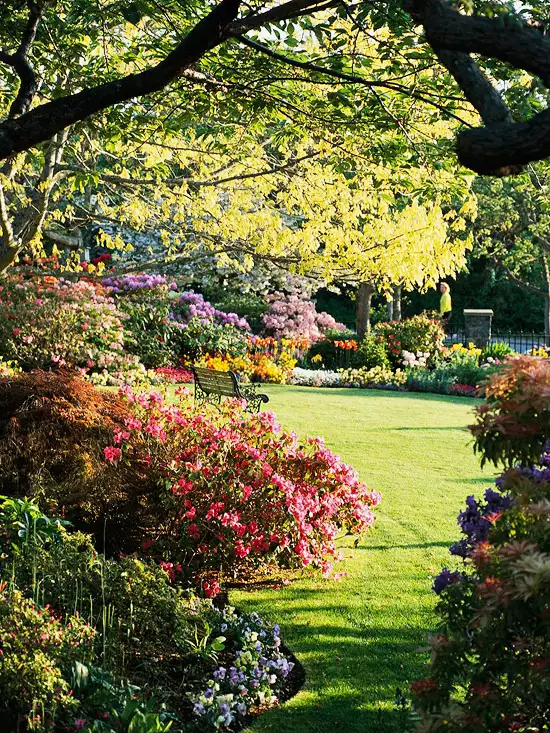Your Seasonal Lawn-Care Schedule for the Midwest

As a midwesterner, you know the seasonal extremes well. You may even look forward to your region's temperature swings. But your lawn probably doesn't love the scorching summers and frigid winters. With these contrasting conditions, it can be tough to keep your yard in its best shape. To simplify your lawn care, refer to our season-by-season guide, which tells you what to do when, and you'll be well on your way to your best lawn ever.
Spring
Maintaining Your Mower
Before you even step foot onto your lawn, tend to your mower. Bring your grass cutter in for service in early spring—that way, you'll beat the rush, and your most critical tool will be in tip-top shape when you need it. Make sure to sharpen the blades so they cut evenly and efficiently.
Starting Your Lawn from Seed
Fall is the ideal time to start a new lawn from seed. However, you can also do it in the early part of spring, which lets your grass establish itself before summer arrives. Start seeding when daytime temperatures hit the 60s.
Aerating
Compacted soil can be a major culprit behind grass that just won't thicken up. If it's difficult to stick a shovel into your soil and you have persistent bald patches, this may be your problem—and fortunately, there's an easy fix: aeration. Pulling up cylindrical plugs of soil when your grass is actively growing enables the roots to reach deeper and the soil to better absorb moisture.
Mowing
Bring out the lawn mower when your grass reaches about 3 inches tall. Keep most grasses at least 2 inches tall—this height helps it ward off weeds and withstand summer drought.
Fertilizing
A light application of lawn food in early spring will give your grass a great start to the season. Keep it light and use a slow-release or organic fertilizer. Wait to fertilize until your lawn needs mowing for the first time. Feeding your lawn too early only wastes money.
Summer
Fighting Grubs
If grubs are an issue, spread an organic grub-control product that continues to work through the season. The best time to do this is in early June.
Keep Mowing
As the summer heat settles in, your grass is probably going to slow down a little. During hot, dry periods, it may only need mowing once every two or three weeks (wait for it to grow about 3 inches tall). During cooler, moister weather patterns, mow frequently enough to keep it from reaching more than 3 inches tall; that could be every week or more than once a week.
Watering
If you want to keep your water bills under control, let your grass go dormant during drought. It will turn brown, but don't worry—it's still alive. When the rains come again, it'll turn green and start growing. If you don't want a brown summer lawn, select drought-tolerant types (such as buffalo grass), or give your yard about an inch of water each week.
Fall
Fertilizing
If you only feed your lawn once a year, autumn is the best time to do it. In fact, your lawn could use a light application of fertilizer in early fall and again in late fall.
More Mowing
It seems like it never ends: As temperatures cool, your lawn will grow faster. You'll likely need to mow regularly through the end of the season.
Cleaning Up
Once you hit the height of fall, you'll need to start cleaning up the leaves, since just chopping them as you mow will leave too thick a layer and could smother your grass. If you don't have the time (or patience!) to rake, you can make several passes over your lawn with a mulching mower to more finely chop them. Repeat this every couple of weeks.
Overseeding
When is the best time to overseed lawns in the Midwest? Most grasses in this region grow best when it's under 75°F, making autumn the ideal time to overseed. Plant your new grass about a month before your average first frost so it can establish itself before the cold arrives.
Aerating
Cooler autumn temperatures mean your grass will start growing more again, so it's a great time to loosen compacted soil.
Targeting Perennial Weeds
Perennial lawn weeds are typically most susceptible to attack in fall when they're winding down and getting ready for winter. Tackle them with an organic herbicide or pull them by hand.
The last step of the year is winterizing your lawn and mower, preparing you to jump in again come spring. Then sit back and enjoy the view: Following this lawn-care schedule moves you several steps closer to a thriving lawn, and it will only become easier to maintain with each passing season.